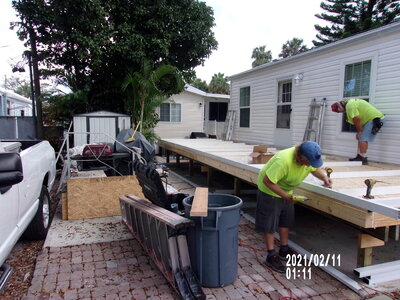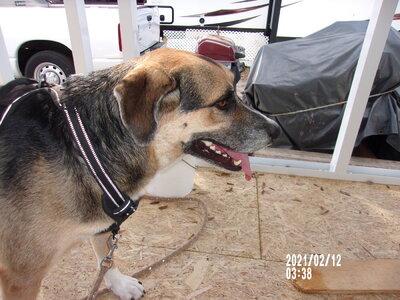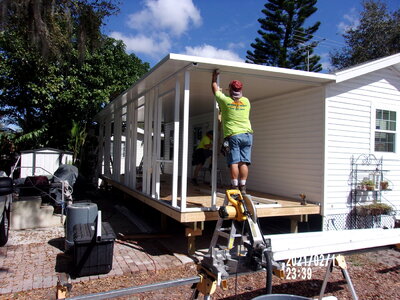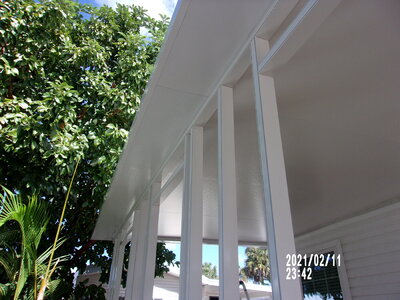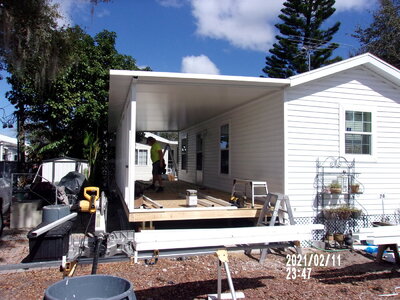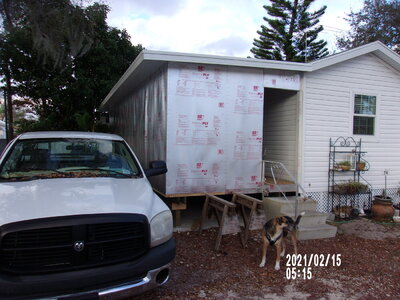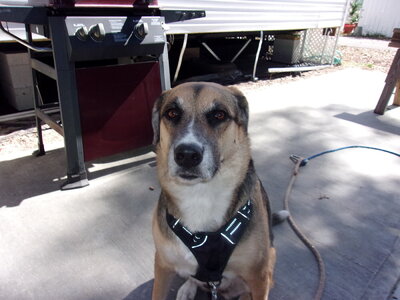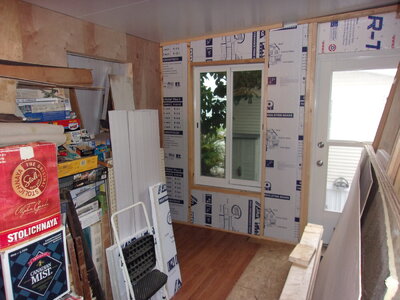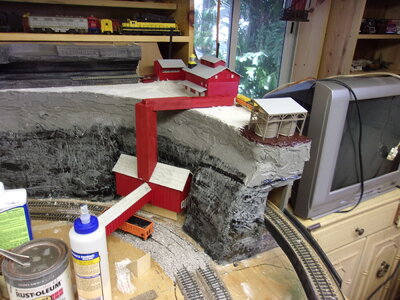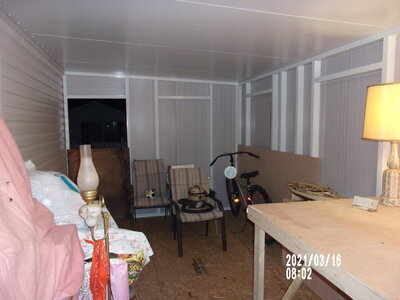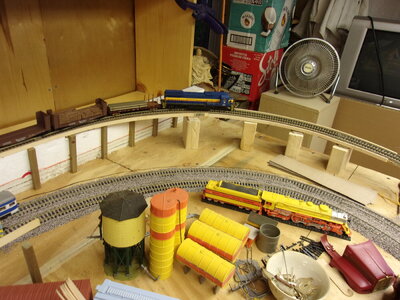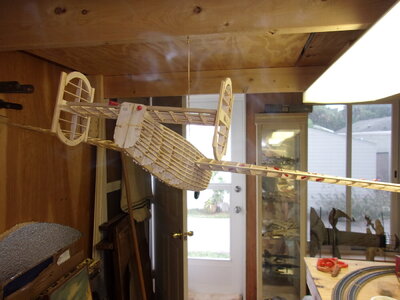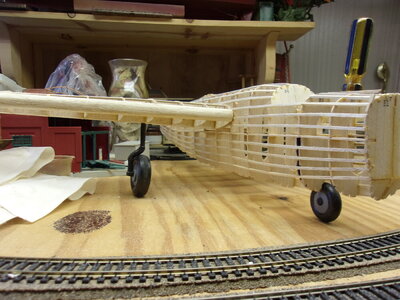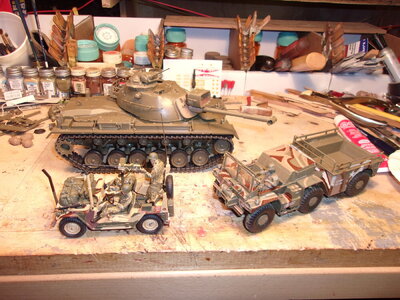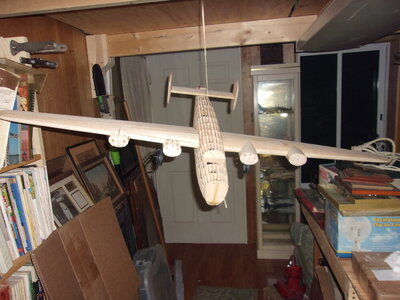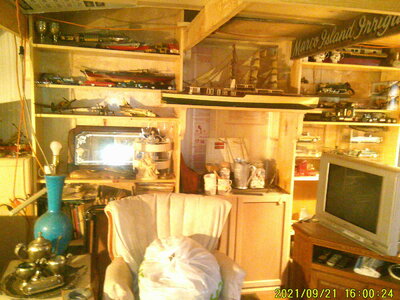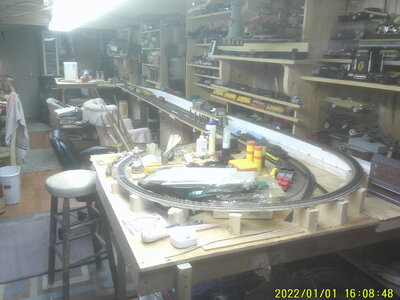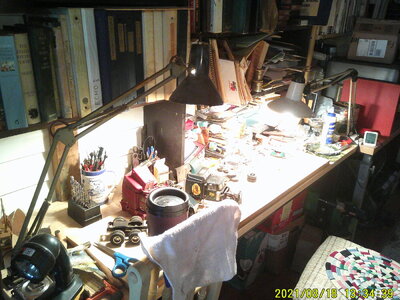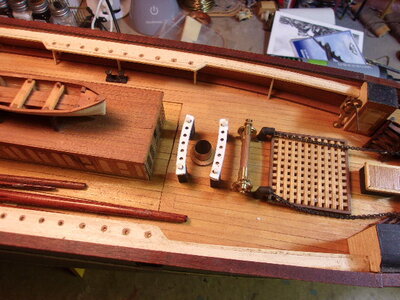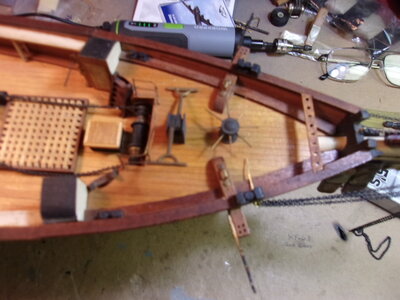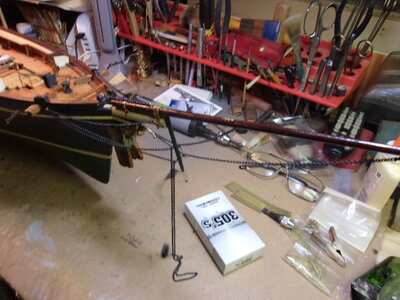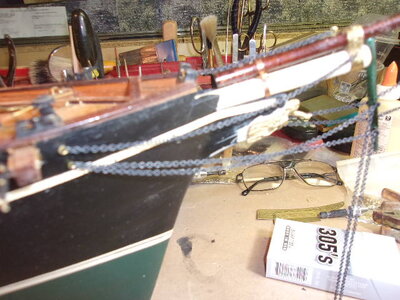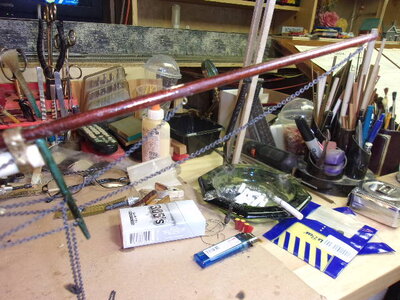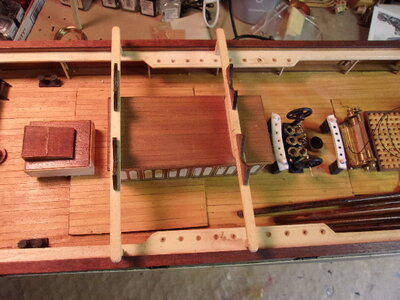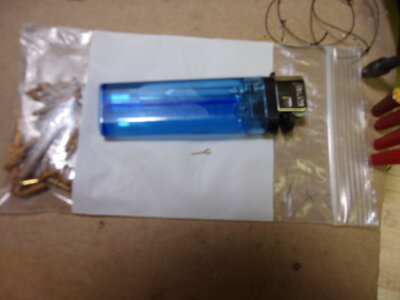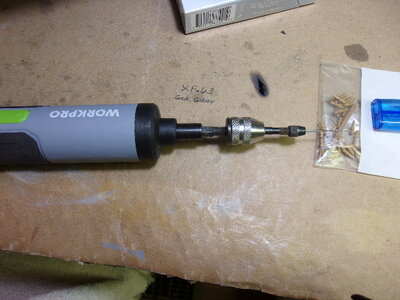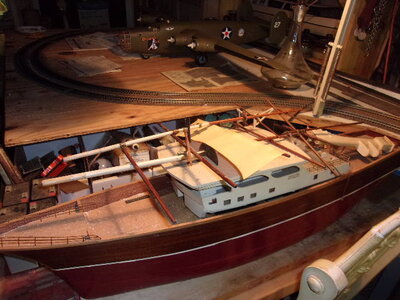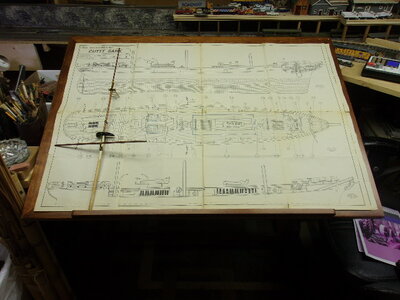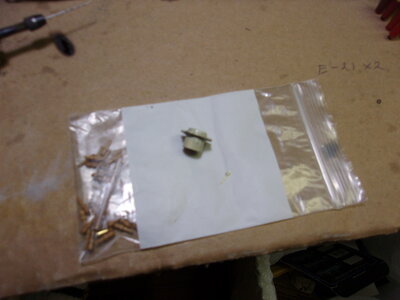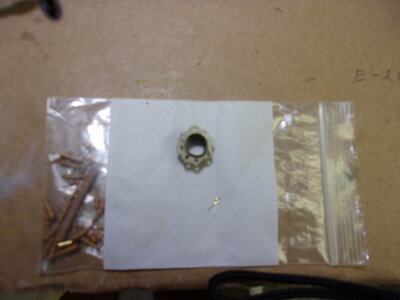Well cuttyjimer I hope that by now you have figured out the rake problem. Sorry to have not answered you in a prompt manner but I had a lot going on so was away from the this site for awhile. To answer your question the rake of the masts was built into the model by the manufacturer. You may have a bit of wiggle room to get the masts all lined up right but not much. You may enlarge the step holes if you need to but don't let the masts get sloppy in the holes. I did not glue the masts in. They are held in place by the rigging. On a real ship the standing rigging holds the masts in place but they still move with the wind. Perhaps with a real ship there is some way to secure the masts to the keel but I don't see where that's necessary for a model and it may be necessary to move the masts a bit to get them to line up while your installing the rigging. So if the masts can move a little bit it may keep you from snapping something off as well.
Remember that on a real ship everything moves at least a little bit. Going through the sea the ship twists and turns as it hits the waves and with all the rigging in place this movement is transferred to every piece on the ship from the keel to the very top of the masts. You will notice that as you progress with your rigging the masts and yards become tighter and tighter and when your finished you can move a line at the bow and watch the lines move at the stern too. They all work together to keep the masts upright and the spars where the Captain wants them.
I am not familiar with Mr. Mastini's methods but it makes sense to attach everything to the masts and spars before mounting the mast to the hull. He is correct to say that attaching another block to a mast or spar after they are mounted in place is difficult at best. I have found that the best and easiest way, if there is one, is to start at the bow and the foremast and attach all the standing rigging first. Then do the same with the main mast and the mizzen mast tieing all three mast together and securing them to the stern with a temporary line. This keeps a bit of tension on the standing rigging and you should adjust any standing rigging that is loose at this stage. The running rigging is where you snap stuff off and break things that require repairs that take a long time. Hopefully you have attached all the needed blocks to the spars and deck as needed and now you can run the running rigging. Start from the inside and work your way out. Attach the lines that are toward the middle of the deck first and then those that are closer to the gunwales. Again start at the bow and work aft. Tighten all the lines from time to time as you proceed so they are all snug and doing their job. Remember that every sail has lines to pull it up and pull it down and to pull it from side to side to catch the wind. Also every line that controls the sails on the port side has an opposite line on the starboard side to adjust the sails and hold them in place. It can get confusing and frustrating but just take your time and study what your doing and it will all make sense eventually. Hope all this will help you in some way but the main thing is to get into the work and learn how you want to do it. You model will look great without the rigging but you'll be surprised at how much better it will look as you add the rigging to it. Eventually you'll be very proud of your accomplishment as it nears completion. After this model do another one that's different and pretty soon you'll be up for anything that comes your way. Pete
Thanks for your input.
I have decided I am going to put a spot of what we called sticky stuff (when kids were little) on the bottom of the masts and then step them to the keel. This stuff is for mounting paper on walls and will not harm paint. It has the consistency of PlayDoh. Then I can use small gages to center mast in the hull and achieve the correct rake. Once the mast is in position, I will begin attaching lower shrouds to dead eyes.
The deadeyes brought up another interesting situation. Most of the models I have seen on this and other sites are of ships built before the clipper ship era and have deadeyes mounted outside the hull. Mine are all inside (an attempt at streamlining?)and there is little room in which to work. I decided to pre build the deadeyes and used a gage ( piece of CD jewel case ) to pre-set the distance between the two dead eyes. Then I used annealed black wire to mimic the lower strops. A drop of CA to hold the legs together. Leave enough slack so lower dead eye can self align when the shrouds are attached.
I drilled holes by hand through the rail and deck at each mounting point. The hole is big enough for the two sided wire strop to slide into. Care has to be taken in drilling since the strop is at an angle. Drill a bit and then reverse drill to avoid drill walk.
Put in the dead eyes and used paper tape from doctor's office to insure proper alignment and to get the standing end of the lanyard out of the way.
My next step is to CA the strops to the deck using thick CA. Have to experiment with using a syringe to apply the glue as deck hardware interferes. I will also come up with a way to protect the deck from wayward CA drops. Of these, I am confident there will be many. Any guidance on using a syringe would be most appreciated.
Any thoughts on my methodology. I tend to overthink what needs to be done. That and the fact that my basement gets very cold, this is a hobby and not an obsession, show up in my relative lack of progress.
If anyone is interested, I will take pictures and send them on. I want to forewarn you that my photo skills leave a bit to be desired.
CuttyJimR




